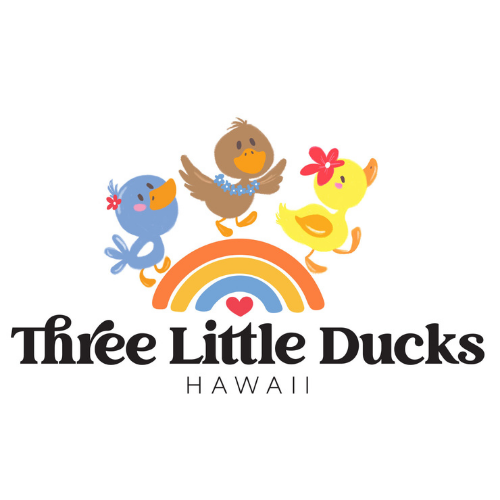If you're a first-time parent, you’re probably keeping a close eye on every little movement your baby makes — and that’s completely normal. So when you notice your baby always looking or tilting their head to one side, it’s easy to worry.
One possible reason behind this is something called torticollis — and while the name might sound intimidating, it’s actually quite common and very treatable, especially with fast, early support.
For over 10 years, I have helped families manage torticollis in their infants as a pediatric physical therapist. Then I became a mom—and found out my own baby had torticollis at birth. That experience helped me truly understand what families go through and deepened my commitment to raising awareness about this common yet often misunderstood condition.
In this blog, I’ll walk you through what torticollis is, how to spot the signs, how to seek treatment, and best practices to do with your baby to promote a healthy development. Whether you're brand new to parenting or just looking for answers, you're in the right place.
What Is Infant Torticollis?

Infant torticollis, also known as congenital muscular torticollis, is a condition where a baby’s head tilts to one side and rotates to the opposite side. It’s usually caused by tightness in a neck muscle called the sternocleidomastoid (SCM). Many parents notice their baby prefers looking in one direction and/or has trouble turning their head the other way. Oftentimes, you can observe your baby always tilting their head in one direction when looking at photos.
Torticollis can be present at birth (congenital) or develop after birth (acquired), often due to positioning habits.
What Causes Torticollis in Babies?
Common causes include:
- Position in the womb (especially with twins or breech birth)
- Birth trauma or C-section delivery
- Consistent positioning (sleeping or resting in one direction)
- Lack of tummy time
What Happens When Torticollis is Left Untreated?
When left untreated, torticollis can contribute to plagiocephaly (flat head syndrome), developmental delays, and/or difficulty with visual tracking and motor skills. Early intervention is key to preventing these complications and supporting healthy development.
Signs of Torticollis in Your Baby
|
Head consistently tilted to one side  |
Flat spot on the back or side of the head  |
Baby prefers looking in one direction  |
|
Difficulty turning head equally both ways  |
Deep red creases on one side of the neck  |
A tight band of muscle on one side of the neck  |
|
Always side-bent to one side of their car seat  |
Trouble with tummy time or lifting the head  |
Uneven shoulders or facial features  |
If you notice any of these, early intervention is key!
How Pediatric Physical Therapy Helps
At Three Little Ducks, we specialize in evaluating movement, strength, and alignment in babies and young children. For torticollis, we create a customized treatment plan that focuses on:

- Gentle neck stretches
- Tummy time strategies
- Positioning tips
- Strengthening and motor development
- Parent education for home exercises
Early therapy can lead to full resolution in many cases. The younger the baby is at the start of treatment, the faster and more effective therapy tends to be.
If your baby shows signs of a consistent head tilt, prefers one side, or has difficulty turning the head, don’t wait. We recommend talking to your child’s pediatrician about a referral to pediatric physical therapy.
Remember, the earlier your child starts, the better!
Unsure whether your baby is on-track with their milestones? Download our Free Milestone and Warning Sign Checklists to ensure your child is on-track for a healthy development.
At-Home Tips for Parents
Here are some best practices to help your newborn achieve their milestones and lower the risk of developing torticollis. Please keep in mind that these activities should not be viewed as a replacement for pediatric physical therapy. If you suspect your child exhibits the signs, we recommend talking to their pediatrician and seeking a referral as soon as possible.
Tummy Time Is Essential
-
Start tummy time the day you give birth. Tummy time helps strengthen the neck, shoulders, and core—critical for a healthy development. Here are some tips:

- Start with a few minutes, several times a day
- Place your baby on your chest or across your lap in the beginning. Then, you can gradually move them to the floor
- Use toys or mirrors to encourage head turning in both directions
- Always supervise and make it playful!
Read our complete Tummy Time Guide to learn more.

Switch Arms When Holding and Feeding
This encourages symmetrical movement on both sides.
Place Toys on Both Sides During Floor Play
This helps your baby move, explore, and build muscle on both sides.
Final Thoughts
Torticollis can be concerning, but with early identification and the right support, most babies respond very well to physical therapy. At Three Little Ducks, we’re here to empower you with the tools, confidence, and community to navigate parenthood and support your baby’s healthy development.
A Community for Learning, Friendships, & Fun
Here at Three Little Ducks, we are creating a space where education meets community and preventative care meets play. With award-winning baby and toddler classes, pediatric physical therapy, free 'ohana yoga, and free family socials, we are an expert-led, supportive community for your family to thrive.
To stay updated on events, expert tips, and more, follow us on Instagram, TikTok, and subscribe to our newsletter.


